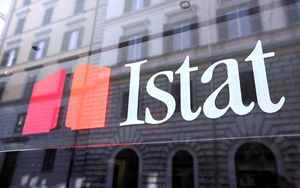(Finance) – In 2022, 55.3% of the population aged 16-74 used the internet and made purchases online (over 24 million people). In particular, 37.3% ordered or bought goods or services in the last 3 months, 12.0% during the year and 6.0% more than a year ago. This is what theIstat in a note in which he illustrates the recent evolution of some indicators relating to the diffusion of online commerce among individuals, taken from the information collected in the module on “Use of new communication and information technologies by
part of families and individuals” inside theannual multipurpose survey “Aspects of daily life”.
As for the use of the internet, Istat records strong differences related to age, gender and al territory. The online trade it is in fact more common among people aged 16-44 and among men. It should be emphasized that the gender gap disappears among young people aged 16-24, resulting in an advantage in favor of women.
With respect to the area, the North-South gradient is confirmed. In 2022, 43.9% of the population residing in the North made online purchases in the last 3 months, compared to 26.5% of that residing in the South. Between 2020 and 2021 there was an increase of over 7 percentage points in the use of e-commerce, thanks to the increase in users who made at least one online purchase in the last 3 months preceding the interview (from 31.4% in 2020 to 39.8% in 2021). In the last year there has been a sensitive one
decrease both as regards the overall indicator (which went from 57.2% in 2021 to 55.3% in 2022) and for that referring to purchases in the last 3 months (37.3% in 2022). This trend – explains the Institute – is justified by the end of the period
restriction due to the pandemic (similar trend is also recorded in other European countries such as Denmark, Germany, Holland and France).
Despite the progress made, i rates of use of e-commerce are still well below the EU27 average, where in 2022 56.1% made online purchases in the last 3 months. This delay is also related to the low level of digital skills present in our country: in 2021, in Italy, 45.6% of people aged between 16 and 74 possess at least basic digital skills, against 53.9% in the EU274.
In addition to the frequency with which citizens resort to electronic commerce, the survey also reveals the type of goods and services purchased for private use via the Internet in the last 3 months: in 2022, among individuals, the purchase of clothing, shoes or accessories was more common (22.5%), household items, excluding household appliances (13.4%), streaming films or series or downloads (9.9%), the products
food (9.3%) and cosmetics (9%).
73.3% of internet users who have made online purchases in the last 3 months declare that they have not encountered any problem during the purchase. Among the users who declared having had some difficulty (26.7%), the greatest criticality is given by the lack of respect for delivery times (13.5%); followed by missed or erroneous deliveries or defective goods (5.6%); technical problems on the web while ordering or paying via the Internet are reported by 4.3% of users, while 3.9% complain
difficulties in submitting complaints and/or unsatisfactory answers and 3.7% of having encountered difficulties in finding information on guarantees or other legal rights.
Businesses that made online sales in 2021 – According to the “Survey on information and communication technologies in companies”, in 2021 the percentage of companies with at least 10 employees who made online sales continues to be low (18.3%) compared to the EU27 average (22.8% ). Among large companies, about one out of two has made online sales
(46.7%, compared to the 44.1% of the EU27 average), but the share drops to 16.7% for companies with 10-49 employees (20.8% in the EU27). The propensity for businesses to sell online had increased significantly in 2020 (from 16.3% to 18.4%) due to the effect
of the difficulties caused by the pandemic. In 2021, 15.5% of companies with at least 10 employees sold via the web, while
the channel of electronic data exchange in an established format (EDI) – mainly used in business-to-business (B2B) transactions – was used by 4.4% of companies. Among the companies that have sold using the web, those that have had private consumers as customers are 86.1%. In 74.1% of cases, companies that sell via the web used their own company’s websites or apps, while in 62.1% of cases the websites or apps of intermediaries were used (against an EU27 average of 85.6 respectively % and 44.4%).
